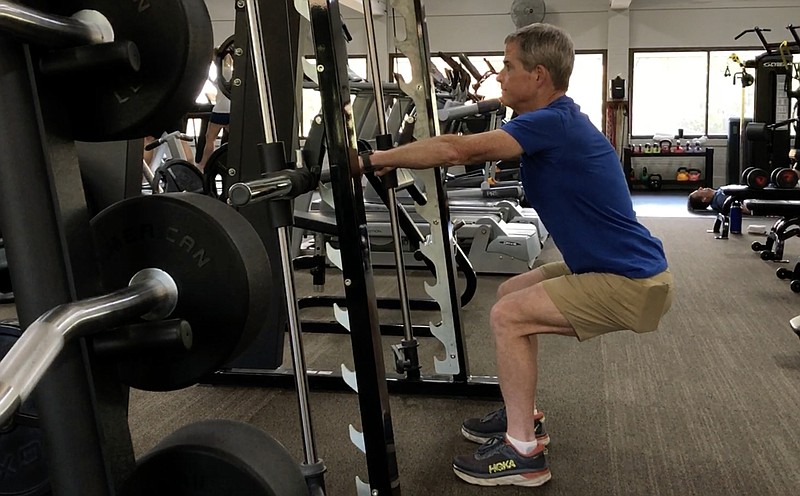A few common problems rob older people of their ability to move freely. Joint injuries, an exceedingly high body mass index and a lack of lower body strength are the main musculoskeletal factors that limit mobility for aging adults.
Although joint injuries are largely the result of accidents, the other two factors often can be prevented. This week, I'll present a few prevention tips and will introduce an exercise that's perfect for the older adult.
About a month ago, my mother took a fall and fractured her ankle in three places. It was a traumatic injury that required surgery, and she has been reliant on a wheelchair and walker as she works through the physical therapy process. She will be 70 next year, and I want to help her regain her mobility for good.
Accidents do happen, and we're lucky that her injury wasn't worse. She will heal and recover, but her lower body will be weak when she does. So, I have already started talking to her about a post-rehabilitation program to prevent excess mass and lack of strength.
Body mass index is the first key, as the lower body is less capable of maintaining mobility for older adults with obesity (30+ BMI). The latest CDC data indicate that 41.9% of all U.S. adults are obese, and Arkansas ranks just about average at 38.7%. BMI can be changed through lifestyle modification. Good nutrition, physical activity and regular habits can all bring BMI levels below 30, which will positively affect overall mobility.
The other area that I've talked to my mother about is her lower body strength. Strength goes hand in hand with BMI, because the key to remaining ambulatory is a high strength-to-weight ratio. The legs need to get stronger as body weight decreases. So, we're working on simple exercises that will improve strength in the quadriceps, gluteals, hamstrings and calves.
The squat exercise is among the most effective lower body movements, as it mimics one key activity of daily living — standing up from a seated position.
We work on chair squats and other options, but this week's exercise is designed to provide assistance for those who find the unassisted squat difficult to manage. The Bar Assisted Squat is perfect for older adults or beginners looking to improve lower body strength.
[Video not showing up above? Click here to watch » arkansasonline.com/1107matt/]
1. Stand in front of a Smith machine with your feet shoulder width apart. Position the machine bar at waist level.
2. Place both hands on the bar with your arms fully outstretched.
3. Press your hips back and squat down until your knees and hips are both at 90 degrees.
4. Drive through the heels to stand back up.
5. Perform two sets of 12.
I love this exercise because it's effective and safe. For added safety, place a bench behind you in case the legs tire out in the middle of the set. The Smith machine bar provides much needed stability for those working on establishing some lower body strength so they can remain mobile for years to come.
Director of business development and population health solutions for Quest Diagnostics, Matt Parrott began this column 20 years ago at Little Rock. He has a doctorate in education (sport studies), a master's in kinesiology and is certified by the American College of Sports Medicine.
vballtop@aol.com
